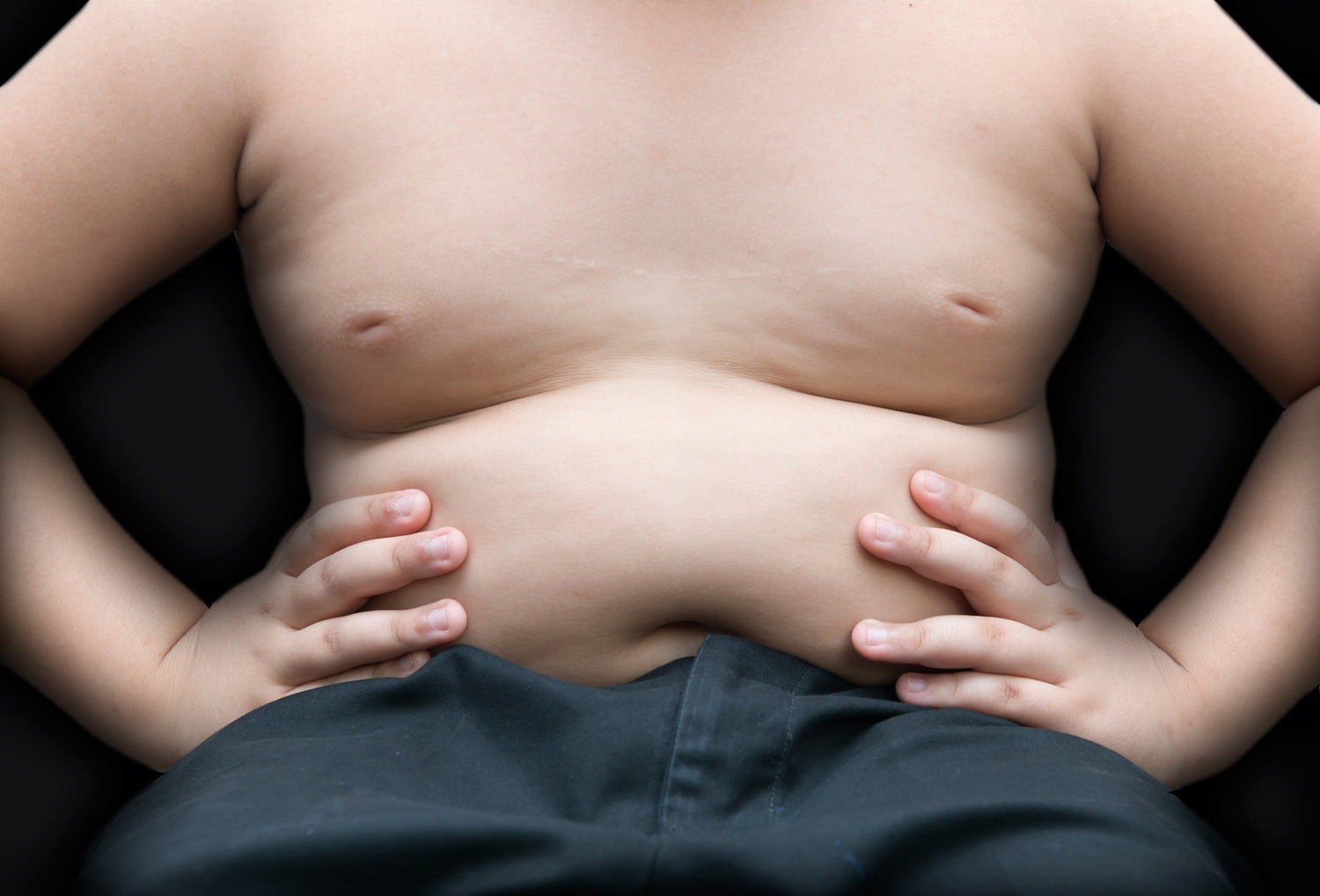Early last week, a headline from the United Kingdom caught my eye. And no, it wasn’t Brexit-related. The headline read, in part, that “80% of parents overfeed their children.”
Come again? My mind was slightly boggled. I mean, to the untrained eye it seems that my own children subsist off a steady diet of air and watermelon. How could I possibly overfeed my children when our mealtimes tend to go a little like this:
Me: Please have a few more bites.
Child: I’m all done.
Me: You haven’t eaten anything. Please take another bite.
Child: I’m full. I ate at breakfast.
Me: . . .
And so on and so forth. From the stories of most of my mom-friends, we aren’t alone in our struggle to get our kids to eat. It's sometimes hard to get anything at all into them. So it seems only natural that I am constantly badgering them for, “just one more bite.”
Yet when I clicked on the article and researched a few more like it, I found that in reality I had no clue what an appropriately-sized meal looked like for a three-year-old. Portion control is such a simple concept! I couldn’t believe it had never crossed my mind to think about it for my children when it’s something I think about often for myself.
And before the pitchforks come out, don’t worry. I’m not talking about limiting what they eat. I’m just talking about starting with realistic portions on the plate. If they want seconds, by all means! But let’s set the bar correctly and go from there.
A quick search on the Healthy Children website managed by the American Academy of Pediatrics, and I discovered that the portions I was placing in front of my children were entirely unrealistic. It turns out, I'm one of the 80% of parents overfeeding their children. A healthy serving of grains for my 3-year-old is actually HALF a slice of bread or 1/4 cup cooked pasta. Seriously. So when I set a peanut butter and jelly sandwich in front of him, I’m actually giving him 4 entire servings of grain. And when he gobbles up two scrambled eggs for breakfast? He’s actually eating twice his recommended daily protein in that one sitting. I was completely taken aback.
Maybe my kids were good eaters after all. Maybe I was the one who needed a reality check.
I know that we are, for the most part, healthy eaters around here. I make three meals a day for my kids, and I serve well-balanced, nutritious foods. We don’t have separate “kid-meals.” We buy a decent amount of organic meats and we get our vegetables from a local farm. I’m not trying to brag, I just mean to give a little context. I am a food-conscious parent, and I thought I was doing a great job. But in actuality I was missing some key components.
Could I do better? Absolutely! I just didn’t know how.
According to the CDC, we are in the midst of a childhood obesity crisis. In the past 30 years, childhood obesity has doubled in children aged 6-11 and quadrupled in adolescents aged 12-19, resulting in more than one third of American youth being considered overweight or obese. Childhood obesity carries with it a number of immediate and longterm health effects including higher risk of cardiovascular disease, pre-diabetes, bone and joint problems, sleep apnea, some cancers, and adult obesity.
And though we are all aware that there's a genetic link to obesity, we don’t need to despair just because we may be carrying around a few extra pounds ourselves. There’s good news too. It’s not completely out of our control and there are plenty of things that parents can do to help our children avoid obesity.
Here are seven research-backed ways parents can protect their children from becoming a part of the childhood obesity epidemic:
One
Maintain healthy folate levels during pregnancy.
You can start protecting your child from obesity before he’s even born. While it’s long been known that children born to women who are obese during pregnancy are more likely to become obese themselves, it’s not been known exactly why this is.
But a 2016 study conducted at Boston Medical Center suggests that the link is not simply obesity, but specifically folate levels during pregnancy. The levels of folate during a mother’s pregnancy were found to affect the child’s metabolism after birth. Mothers who maintain optimal folate levels during pregnancy, regardless of their own weight, are less likely to have children who become obese.
Two
Make sure that young children get enough sleep.
When our kids are older, they are more capable of dictating their own sleep schedules. But for very young children, ages 0-4, they need the help of caregivers to make sure they’re getting ample sleep at night. Many children need guidance even longer.
My own children have been known to turn into terrorizing derelicts when kept up too late at night, but I didn’t realize that their lack of sleep could have adverse health effects as well. And I certainly didn’t know that less sleep increases their chance of becoming obese or overweight later in life.
A 2010 study confirms that very young children, aged 0-4, who have shortened nighttime sleep duration are almost twice as likely to later become obese or overweight. Daytime sleep, or naps, were not found to affect this outcome. The theory here is that when we are tired, our body produces fewer leptin and more ghrelin hormones, the same hormones that regulate our hunger and appetite. By making sure they are well-rested, we set our kids up for a healthier metabolism.
Three
Practice smart portion control.
Until I began to research appropriate child-sized portions, I had no idea that the amount of food I was placing in front of my kids, and even encouraging them to eat, was not realistic. Even worse, it was putting them at risk. And I’m far from alone.
A study by the United Kingdom’s Infant and Toddler Forum surveyed 1000 parents and found that 79% of them were routinely offering portions larger than the recommended size for their child. At the same time, 73% of parents worried that their children were not eating enough.
So why does portion size matter if our kids don’t typically eat everything we place in front of them? Another study new in 2016 revealed that larger meal sizes put children at increased risk for childhood obesity. But don’t fret. There are resources available to help.
The Infant and Toddler Forum created a visual guide to toddler portions and a similar chart is also available from the American Academy of Pediatrics. By placing smart portions in front of our children, we set them up to expect more realistic portions as they grow.

Four
Limit media exposure.
Though we’re primarily talking about food and a healthy relationship with eating here, media and screen time are involved in the childhood obesity epidemic in two important ways.
First, media consumption tends to be a sedentary activity, meaning that when our children are partaking in screen time, they are missing out on physical activity. Recent studies found that increased screen time is linked with increased risk for childhood obesity.
And second, a new study out of McMaster University in Canada revealed that exposure to ads for junk food increased the amount of unhealthy food and beverage choices children made. Decreasing screen time decreases exposure to these ads. Practical advice linked with limiting screen time includes not having more than 2 TVs in a home, not having screens in a child’s room and having consistent rules in place to limit screen time.
Five
Educate yourself and other primary caregivers about healthy eating and physical activity.
A 2012 study from the International Journal of Behavioral Nutrition and Physical Activity found that over time, children whose parents had access to information and support regarding diet, health and physical activity were less likely to become obese and more likely to beat obesity if they were already afflicted. Central to the findings was the parents’ role in identifying healthy measures and feeling empowered to make good choices.
Unsurprisingly, parents who are proactive and educated regarding obesity are less likely to have obese children. The American Psychological Association agrees, noting that “when parents stock the home with healthy foods and encourage outdoor exercise—and when peers and family members join in the healthy eating—overweight children are most likely to show sustained weight loss over time.”
Six
Make family mealtime a positive experience.
Family meals together on their own are not enough to prevent obesity. If dinner together becomes a battleground over food or an upsetting mix of family dynamics, family meals are just another stressor. But family meals in a positive environment are associated with lower rates of childhood obesity.
Specifically, longer meals served around a table and away from the television were less likely to be associated with overweight families. Additionally, non-overweight families were more than twice as likely to allow children to serve themselves at mealtime.
Seven
Send your kids outside to play.
The CDC and the United Kingdom Health Education Authority both recommend that children and youth get at least 60 minutes per day of moderate to vigorous physical activity. A statement from the American Academy of Pediatrics recommends that parents “should encourage children to play outside as much as possible.”
But many parents may actually be afraid to do so. An article from the United Kingdom’s Telegraph quotes child psychologist, Dr Richard Woolfson, as pointing out that although "energetic free-play outdoors used to be the typical activity in childhood, such opportunities are rare now, largely because of parental fears about their child's safety. Sadly, this has a restrictive effect on a child's development . . .
It’s a sad day when attempting to protect our children from one danger exposes them to another, but for parents who fear free play outdoors, structured sports or play areas provide the necessary opportunities for physical activity.
Eight
Provide regular nutritious meals and limit stressors during adolescence, particularly for girls.
Another study new in July 2016 followed female adolescents who are of normal weight in their early teen years. This study found that when girls are exposed to food insecurity (i.e. uncertainty about whether regular meals will be available), in combination with harsh parenting styles as adolescents, they were more likely to become obese or overweight during their teen years.
Among the harsh parenting techniques under the microscope were hostile physical contact and angry or critical behavior. Though some parents may be unable to prevent food insecurity or personal stress levels, we can all be mindful of the way we let our own stress affect our children. Teens who were exposed to food insecurity without the addition of harsh parenting were less likely to become overweight than those who experienced food insecurity in combination with harsh parenting.
Though childhood obesity brings with it a number of disconcerting health issues and additional psycho-social concerns, it is reassuring to know that as parents, we are not helpless. Like many parents, I believed I was doing everything I could to foster my children’s healthy relationship with food, but I wasn’t aware of the current research that shows just how much more we can do to set our kids up for success. Providing well-rounded, nutritious meals is really just the tip of the iceberg.
Armed with knowledge and backed by science, parents of kids of any age can play a role in protecting them from the childhood obesity epidemic and making sure that they are on the path for success as they forge their own relationships with food.
For more about preventing childhood obesity, visit the American Heart Association or the Centers For Disease Control and Prevention.



